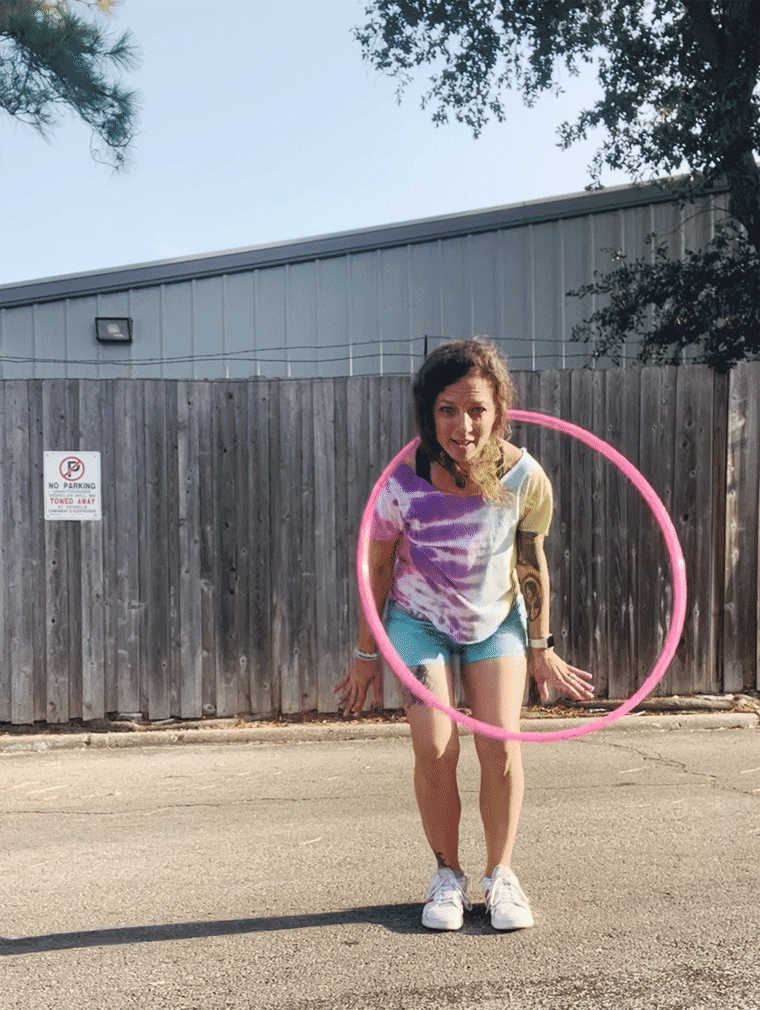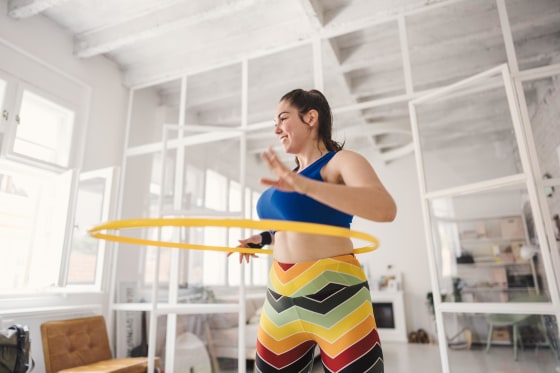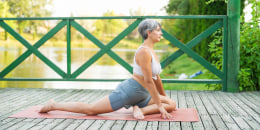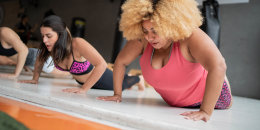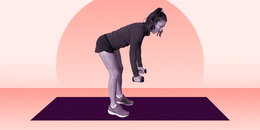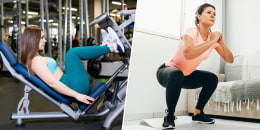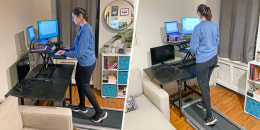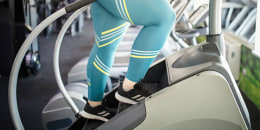When was the last time you used a hula hoop? For many, it's been decades. While the childhood pastime may invoke memories of time spent at recess, it shouldn't be an activity reserved for child's play.
Hula hooping is a safe, fun and effective workout for people of all ages. Some people swear by hula hooping for a powerful, full-body exercise — one of these is Sara Cole Barnette, a massage therapist and yoga and hula hoop instructor based in Houston, Texas.
While hula hooping may have originated as a toy for children, it has evolved over time, Barnette tells TODAY.com. These days, hula hoops come in various sizes and weights to serve different purposes — from fun to exercise to dance and acrobatic performances, she explains.
Benefits of hula hooping
Hula hooping around the waist, or waist hooping, is a great aerobic exercise that raises the heart rate and the engages the whole body, Barnette explains.
"Just hooping around your waist (with a normal hoop, not a weighted one), you'll see after about three minutes your heart rate is pumping," says Barnette.
In addition to engaging the hip muscles, abs and obliques, waist hooping also works the legs, arms, and other parts of the upper body, Barnette adds. "It is an intense full-body workout and your heart will be pounding, similar to doing a spin class or an aerobics class or Zumba class," says Barnette. At the same time, it's low-impact on the joints and generally very safe, she adds.
Keeping the hula hoop in orbit around the waist requires a good deal of coordination and stability. "The main thing that most people love that it builds is core strength and balance," Barnette notes.
Similar to being right- or left-handed, people tend to spin in a dominant direction when hula hooping, either clockwise or counter-clockwise.
"We encourage creating balance by trying to go in both directions," says Barnette, adding that this adds an element of focus and mindfulness. "It brings connection to yourself and your body in the present moment," she explains.
Most importantly, Barnette says hula hooping is uplifting and fun. "It creates play and health at the same time." It’s a very accessible exercise, meaning you can do it at home, while watching TV, outside or in a workout class setting.
How to do a hula hooping workout
Anyone can learn how to hula hoop, says Barnette, but it may take some trial and error to achieve the right technique. “When I started as an adult, my muscle memory wasn’t quite equipped to do what I did as a kid, so it took time to practice," says Barnette. Here are her tips for getting a safe, fun and effective hula hoop workout.
- Start with stretching: Hula hoop workouts should always start with stretching, says Barnette, which can also be done using the hoop, and it's important to stand up straight and maintain good posture.
- Learn proper form: Waist hooping involves standing inside the hoop with both feet slightly more than shoulder-width apart, says Barnette. Then, bringing the hoop to the midsection of the body, let go and push the hips back and forth quickly, either side-to-side or back to front. "You actually don't make a circle with your hips, it's more of a pulse or press back and forth," says Barnette. It may take a little while to figure out how to maintain momentum and keep the hoop spinning in an “orbit” around the waist, she adds.
- Keep both sides balanced: As previously mentioned, Barnette recommends people try to switch directions of the hoop instead of only hooping in their dominant direction.
- Start slow and build up time: Beginners should start out slowly, according to Barnette, and gradually increase the time or intensity. For example, a person may start to hula hoop in three- to five-minute intervals and work up to 10-minute or 15-minute workouts. “Ideally, I would encourage at least a 30-minute workout,” says Barnette.
- Then add in a challenge: Once you nail down the waist hooping, you can add in elements to make it more challenging, such as squatting, lunging, or jumping, Barnette adds. “What I teach today is a mix of both the dance and the workout,” says Barnette. Beyond the waist, you can hula hoop around the arms, knees and shoulders, she explains. "There's always ways to make it more challenging and keep pushing."
What type of hula hoop is best?
Typically, beginners start out with a larger hoop that has a wider diameter, Barnette explains, which spins slower so people have more space and time to get the hoop moving.
“As you get good at it, your hoop can shrink down to a smaller diameter, which is encouraging more intensity in the core workout because you’re having to push harder and faster to keep the hoop moving,” says Barnette.
Hula hoops are usually made out of plastic material, such as polypropylene tubing or high density polyethylene (HDPE), says Barnette. The price for a hula hoop can range from $10 for a basic plastic hoop to $50 for weighted or “smart hoops” and over $100 for remote-controlled, light-up hoops performers use, she adds.
Do weighted hula hoops work?
You don't need a weighted hula hoop to get a good workout, but these hoops can up the intensity. "They do help with that core strengthening and because they’re heavier (and move slower), they can help you learn waist hooping too," says Barnette.
In a 2019 study comparing the effects of weighted hula hooping to walking in subjects with "overweight" BMIs, researchers found that hula hooping can be used to decrease abdominal fat and increase muscle mass in the trunk.
However, it's important to note that heavier weighted hoops can cause bruising or pain on the waist, she adds.
Who is hula hooping a good workout for?
"The joy of this is that it is for everybody, I have people in my class from two years old all the way up to geriatric age," says Barnette, adding that hula hoop size and weight can always be adjusted to help people hoop more successfully.
"If there's anyone with underlying health conditions, we always encourage them to ask their doctor first," says Barnette. As with any exercise, people should stop if they feel pain or discomfort while hula hooping, Barnette says. “Listen to your body,” she adds.
However, hula hooping is considered a basic exercise that can be safe for most people, she adds. If anything, the biggest risk is whacking yourself or someone else with the hula hoop by accident, says Barnette, so it's important to make sure you are careful and have enough clearance around you.
7 hula hoop exercises to try
Here are some sample hula hoop exercises to try. From basic hooping to strength moves to fun challenges like neck hooping, there's a move for everyone.
Waist hooping
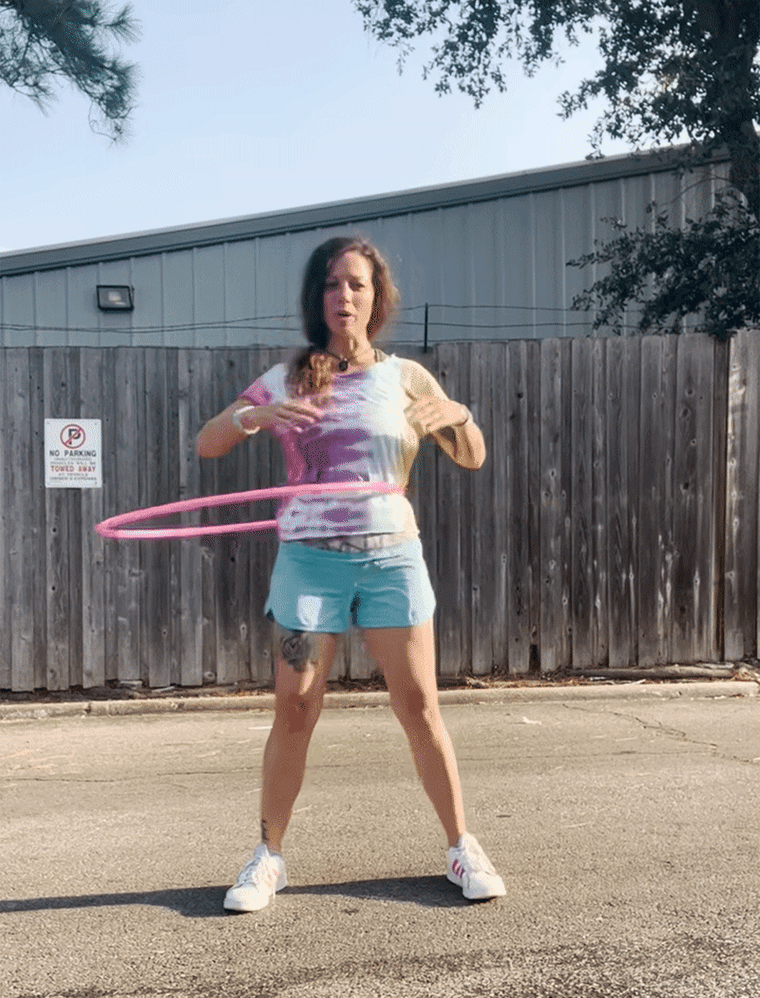
Squatting while waist hooping
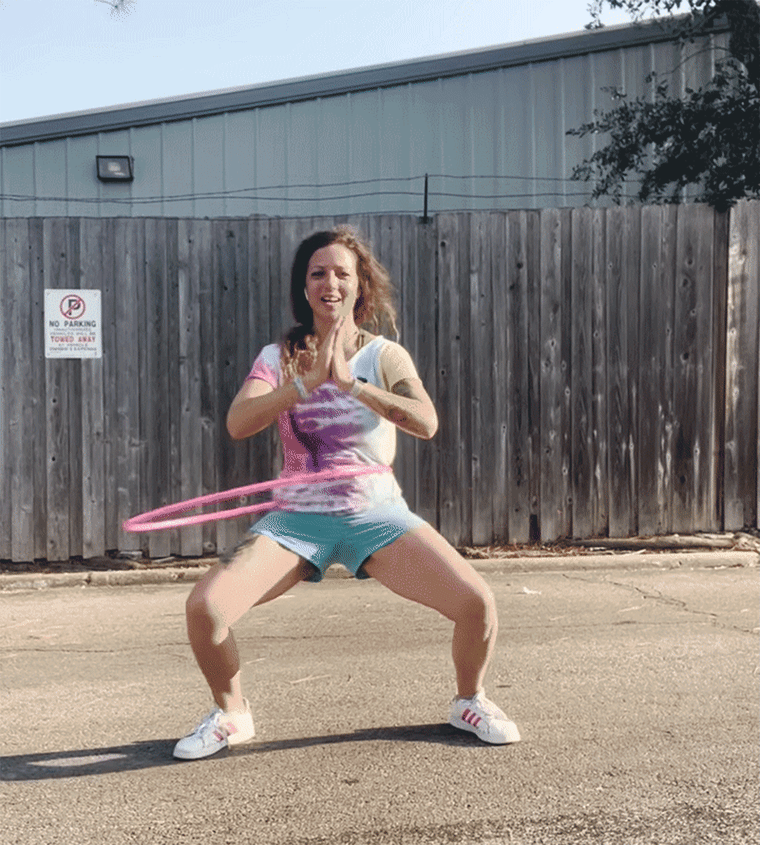
Lunging while waist hooping
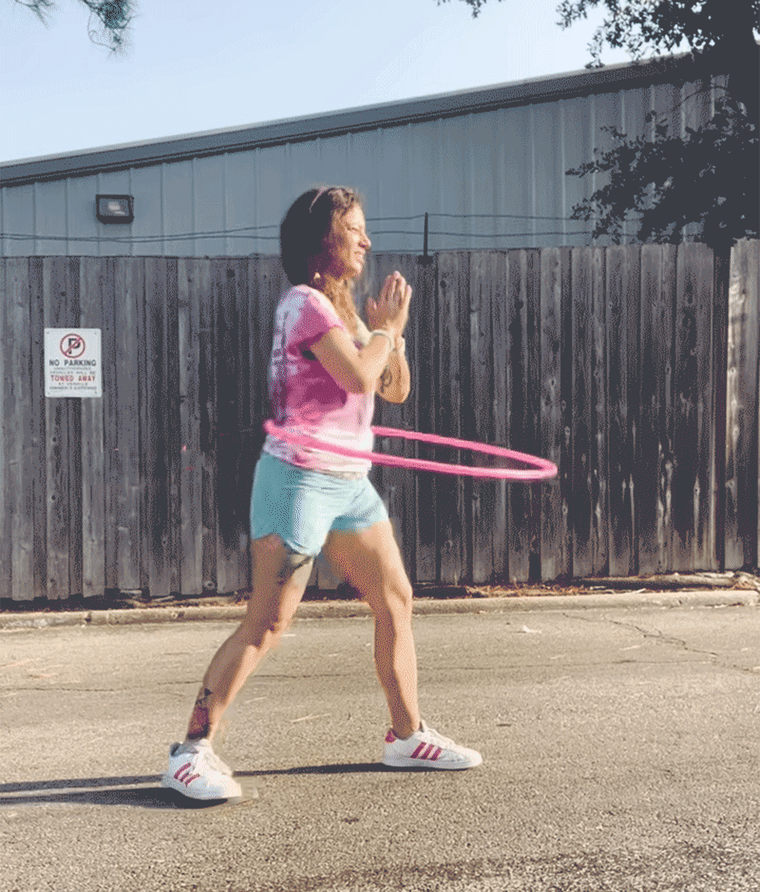
Walking while waist hooping
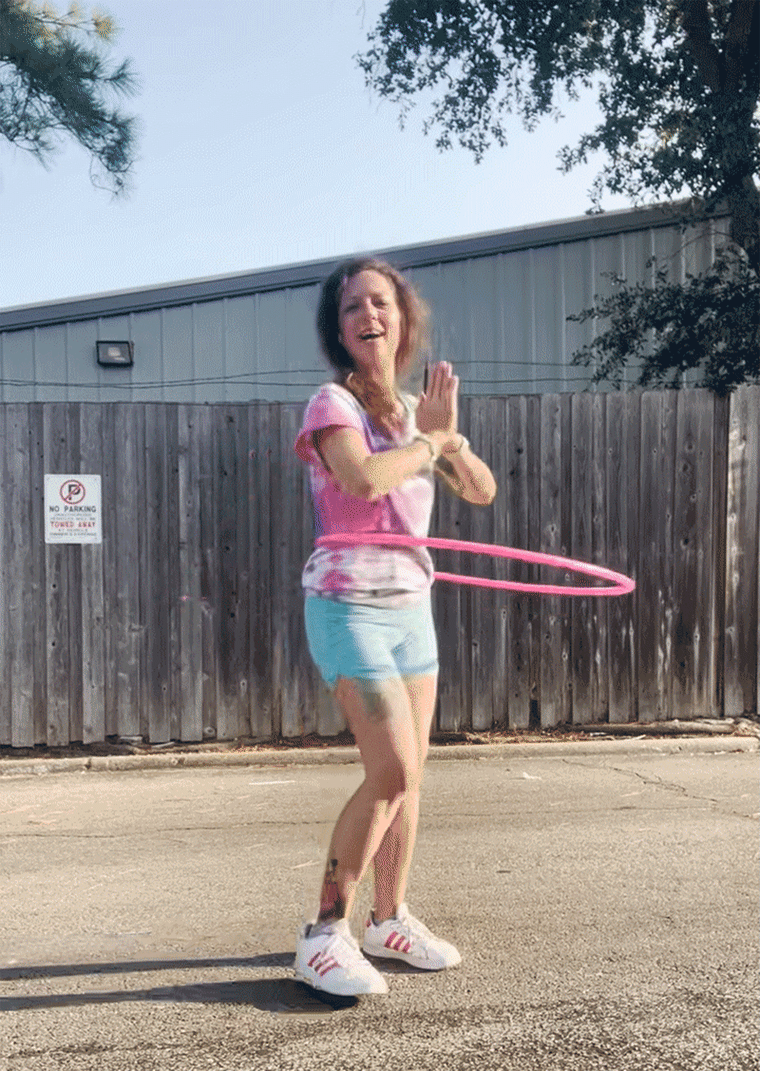
Hula hooping in a "pencil pose"
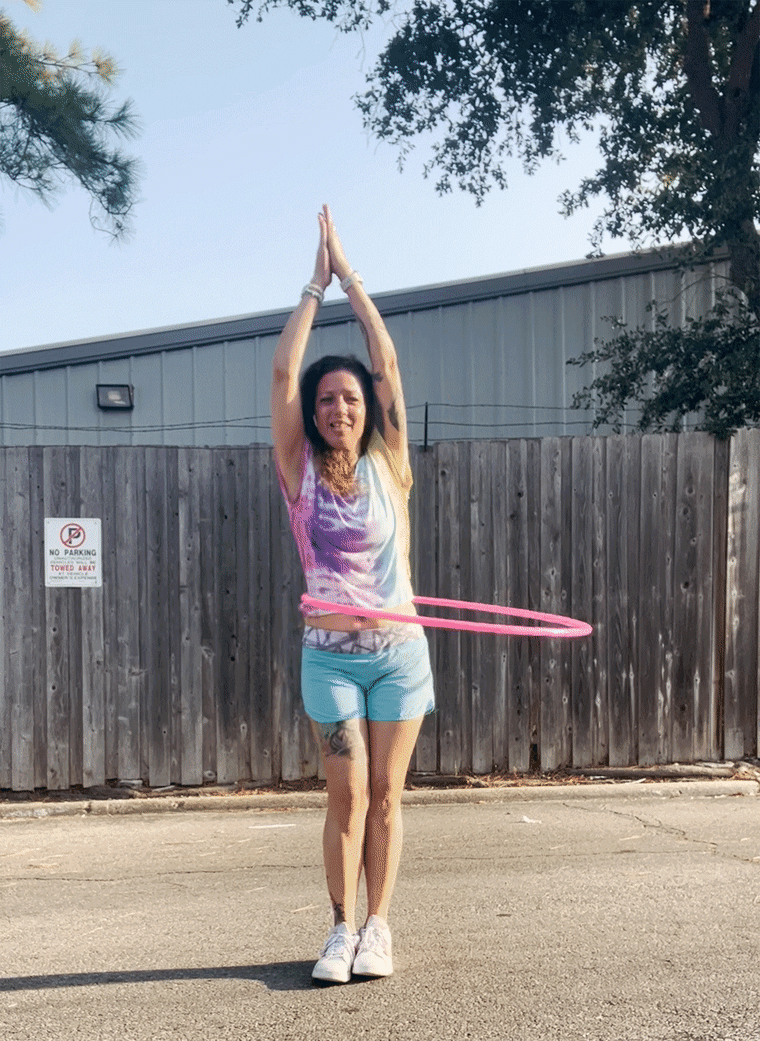
Hula hooping around the knees
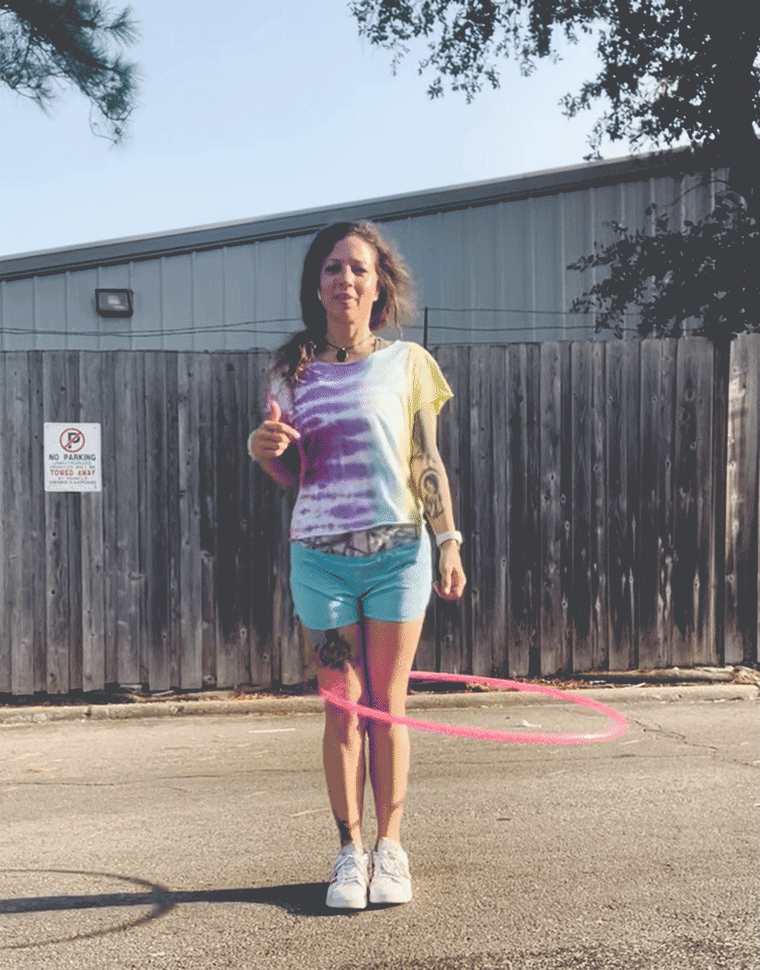
Hula hooping around the neck
